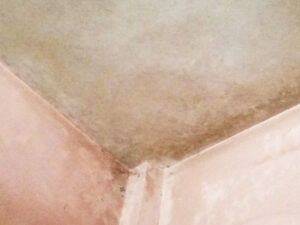I was perplexed at first when faced with the challenge of keeping my Andersen casement windows pristine, attempting to figure out the most efficient way to clean them from the inside. With their unusual form and inward-opening capability, the task appeared onerous. With a little research and hands-on experience, I discovered a simple and effective way to approach this window-cleaning difficulty.
In this blog post, I’ll offer my tips for achieving shining Andersen casement windows without acrobatics or expensive equipment. I’ve got you covered when it comes to removing filth or reaching those tight areas. As I walk you through the step-by-step process of cleaning these spectacular windows from the comfort of your own home, you can say goodbye to the hassle and welcome to crystal-clear vistas.
How to Clean Andersen Casement Windows from Inside
Cleaning your Andersen casement windows from the inside is essential for maintaining their beauty and operation. Dust, filth, and grime can build up on the window surfaces over time, blocking your view and lowering the efficiency of the windows. Cleaning your windows on a regular basis will not only keep them looking spotless but will also improve their longevity. We’ll lead you through each step of cleaning Andersen casement windows from the inside in this comprehensive guide, providing extensive information to ensure a thorough and effective cleaning.

Step 1: First and first, safety must be prioritized
Priority number one should be safety before you begin cleaning. Choose a time when the weather is quiet and there are no high winds or rain to clean the windows. Inspect the window knobs and latches as well to ensure they are secure and functional. If you must use a ladder, be sure it is stable and properly positioned against the wall. Consider having someone help you with the cleaning, especially if you’re working at a high level.
Step 2: Launch Windows
Begin by completely opening the casement windows. This will allow you to easily reach the inside and external surfaces of the windows. Fully opened windows will help improve airflow during and after cleaning.
Step 3: Clean Up the Dust and Debris
Gently remove loose dust, cobwebs, and debris from the window frame, hinges, and corners with a vacuum cleaner equipped with a brush attachment. Pay special attention to difficult-to-reach locations, such as corners and crevices, which tend to acquire more dirt over time. Preventing smearing on the glass during the cleaning procedure begins with removing loose debris.
Step 4: Make a cleaning solution
Combine a tiny amount of mild detergent and distilled water in a bucket. To avoid damaging the window surfaces or leaving streaks, avoid using aggressive chemicals. Gently stir the solution to ensure that the detergent is completely dissolved in the water. Using a mild detergent to remove dirt and grime will successfully remove the dirt and grime without harming the window components.
Step 5: Wet the Microfiber Cloth
Dip a soft microfiber cloth into the cleaning solution that has been prepared. Check that the cloth is damp but not soaked. Excess water might seep into the window frame and cause damage, so wring out the cloth as needed. Microfiber cloths are perfect for washing windows since they are soft on the glass and leave no lint behind.
Step 6: Cleaning the Window Glass
Begin by cleaning the top corner of the window glass and work your way down. Wipe the glass vertically to effectively cover the entire surface. To avoid harming the glass, use light pressure, especially if there are any tenacious stains. If you come across sticky residues or tougher stains, use a little extra pressure or use a separate cloth with a little more detergent to remove them.
Step 7: Wipe Down the Window Frame
Clean the window frame, including the tracks and hinges, with the same damp microfiber cloth. These locations can gather dirt and grime over time, so make sure they are well-cleaned. Cleaning the tracks and hinges will also assist to improve the smooth operation of the windows.
Step 8: Rinse the Microfiber Cloth
If the microfiber cloth becomes too dirty during cleaning, properly rinse and wring it off before continuing to clean the windows. The use of a soiled towel can spread dirt and produce stains on the glass.
Step 9: Squeegee the Glass
Remove any remaining cleaning solution from the glass with a squeegee for a streak-free finish. Begin at the top of the window and pull the squeegee down in a smooth, continuous motion. To avoid smears, wipe the squeegee blade with a dry microfiber cloth after each pass.
Step 10: Allow the Window to Dry
Gently pat the window dry with a clean, dry microfiber cloth to eliminate any lingering moisture. Check for any remaining water droplets on the glass or window frame. Leaving water left can cause stains and, over time, mold or mildew growth.
Step 11: Check for Missing Spots
Following window cleaning, carefully inspect the glass and frame for any missed areas, streaks, or smudges. To obtain a flawless finish, re-clean such spots if necessary with a fresh microfiber cloth and distilled water.
Step 12: Shut down the computers
Close the windows securely once the cleaning is finished. To achieve a tight seal, check that the latches are properly engaged. Close the windows properly to prevent dust and filth from entering the interior space and to maintain energy efficiency.
Step 13: Finishing Touches
To eliminate any residual dust or cleaning solution, wipe down the surrounding window area, including the window sills, using a clean microfiber cloth. This final step will ensure that your entire window area is clean and well-kept.
You can easily clean your Andersen casement windows from the inside by following this step-by-step tutorial and paying attention to the details. This will keep them looking sparkling clean and performing properly. Cleaning and maintaining your windows on a regular basis can not only improve their appearance but will also help to a more comfortable and pleasant living environment. Remember to use this cleaning routine on a regular basis to keep your windows in good condition for many years.
Alternative Methods for Cleaning Andersen Casement Windows from the Inside
Cleaning the inside of Andersen casement windows is critical for maintaining their beauty and operation. While the step-by-step guide offered earlier is effective, you can attempt other methods based on your tastes and available resources. In this section, we will look at four different ways to clean your Andersen casement windows from the inside, giving you more options for reaching a flawless finish.
Method 1: Solution of Vinegar and Water
If you prefer natural cleaning solutions or wish to avoid using detergent, a vinegar-water solution can be a good substitute. Combine equal parts white vinegar and distilled water in a spray bottle. Spray the solution on the window glass and frame, then wipe it clean with a delicate microfiber towel. The acidity of vinegar aids in the breakdown of tenacious stains and grime, leaving your windows clean and streak-free.
Method 2: Commercial Window Cleaning Solution
Commercial window cleaning products intended exclusively for glass surfaces are widely accessible to individuals who prefer ready-made solutions. These products are frequently packaged in spray bottles, making them simple to use. Apply the solution to the glass according to the manufacturer’s directions, then clean the windows completely using a squeegee or microfiber cloth. Commercial cleaning products are designed to eliminate grime while still leaving a streak-free sheen.
Method 3: Steam Cleaning
Steam washing is an efficient way to clean your Andersen casement windows. Steam cleaners use heated steam to remove and dissolve dirt, grime, and grease off windows and glass. Choose a steam cleaner designed for use on windows and follow the manufacturer’s directions. After steaming, wipe away the loosened debris and moisture with a microfiber cloth or squeegee, exposing sparkling clean glass.
Method 4: Extendable Window Cleaning Pole
An extension window cleaning pole can be a useful piece of equipment for cleaning windows that are high and difficult to reach. These poles are equipped with a range of attachments, including squeegees and microfiber cleaning pads, allowing you to clean windows from the ground. Extendable poles are particularly beneficial for upper-floor windows or windows in difficult-to-reach locations. They let you keep your windows clean without using a ladder or jeopardizing your safety.
Before using any alternative cleaning methods, examine them on a small, inconspicuous area of the window to verify they do not create damage or stains. Always employ safety precautions and protective equipment when working with harsh cleaning products or steam cleaners.
How Often Should I Clean the Interior of My Andersen Casement Windows?
The regularity with which you clean your Andersen casement windows from the inside is determined by a variety of factors, including your location, climate, and surrounding environment. Cleaning your windows at least twice a year is generally suggested to maintain their beauty and performance. These two cleaning procedures are best done in the spring and fall.
Cleaning your windows in the spring helps eliminate dirt and grime that has accumulated during the winter. This cleaning gets your windows ready for the warmer months, when you’ll be opening them more regularly for fresh air.
Cleaning your Andersen casement windows in the fall is critical before the colder months arrive. Removing debris and accumulated grime now ensures that your windows will operate properly throughout the winter. A clean window surface also allows more sunlight to enter your home during the shorter days, making it brighter and cozier.
However, if you live in a polluted region, near a construction site, or near the beach, where salt and sand can accumulate, you may need to clean your windows more frequently. In such circumstances, increased cleaning frequency prevents dirt and pollutants from adhering to the windows and creating damage over time. Finally, frequent cleaning and maintenance not only improve the beauty of your Andersen casement windows but also increases their longevity and ensure maximum performance.
How Can I Avoid Streaks When Cleaning My Andersen Casement Windows?
Cleaning your Andersen casement windows without streaks involves a mix of proper techniques, appropriate cleaning chemicals, and ideal environmental conditions. Streaks are common when cleaning residue is left behind or when the cleaning cloth used is not suitable for glass surfaces. Follow these steps to get a streak-free finish:
Make use of a clean microfiber cloth
Begin with a lint-free microfiber cloth. Paper towels and abrasive materials should be avoided since they may leave lint or particles on the glass. Microfiber towels are excellent for washing windows because they capture dirt and grime, keeping it from spreading across the glass and leaving streaks.
Select the Best Cleaning Solution
Use a gentle cleaning solution designed for glass surfaces. To make an effective and streak-free cleaning solution, dilute a tiny amount of dish soap or white vinegar in distilled water. Avoid using harsh chemicals or ammonia-based cleaners, which can damage the protective coatings on the windows and leave streaks behind.
Clean on Cloudy Days
A dark or overcast day is great for cleaning your Andersen casement windows. When cleaning on a sunny or hot day, the cleaning solution may dry fast, resulting in streaks as you wipe the glass. On overcast days, the solution has more time to operate efficiently, and the cleaning process runs more smoothly.
Wipe in the Reverse Directions
Wipe the glass in different directions on each side of the window to avoid streaks. Begin by cleaning one side vertically and the other horizontally. If there are any streaks, you can quickly see which side needs more care.
Using a Squeegee, dry the surface
Use a squeegee to remove any remaining cleaning solution and water after washing the glass with a microfiber cloth. The rubber blade of the squeegee provides a uniform and streak-free removal of moisture from the glass surface. To avoid putting water back onto the glass, wipe the squeegee blade with a dry microfiber cloth after each pass.
Examine for any missed spots
After cleaning, inspect the windows thoroughly for any missed areas, streaks, or smudges. If any spots require additional attention, re-clean them with a clean microfiber cloth and a small amount of the cleaning solution.
Excessive Cleaning Solutions Should Be Avoided
Using too much cleaning solution on the glass can result in streaks and residue. Only a small amount of the solution should be applied to your microfiber cloth or directly to the glass. A little goes a long way, and using too much might be detrimental.
You can efficiently prevent streaks when cleaning your Andersen casement windows from the inside by following these suggestions and practices. Regular maintenance and cleaning will not only keep your windows in perfect condition but will also ensure their longevity and effectiveness for many years to come.
Can I Clean My Andersen Casement Windows in the Sun?
It is not advisable to clean Andersen casement windows on a sunny day. When cleaning windows in direct sunshine, the cleaning solution can dry on the glass too rapidly, leaving streaks and residue. Because of the heat from the sun, the cleaning solution may evaporate before you have a chance to fully wipe the windows, leaving behind ugly streaks that are difficult to remove.
Furthermore, cleaning windows on a hot day can be unpleasant and physically taxing. The combination of direct sunshine and physical exertion may cause weariness and diminish the cleaning process’s efficacy.
Cleaning Andersen casement windows on a cooler, gloomy day or when the windows are in the shadow yields the best results. You’ll have more time to wipe the windows properly and get a streak-free, shining finish this way.
If you must clean your windows on a sunny day, do so early in the morning or late in the afternoon when the sun is less intense. Work quickly and efficiently, breaking the cleaning into tiny portions to prevent the cleaning solution from drying before you have a chance to properly wipe it off.
Can I Clean the Windows from the Inside using a Pressure Washer?
It is not suggested to use a pressure washer to clean windows from the inside. Pressure washers are strong appliances meant for washing surfaces such as driveways, decks, and siding outside. The high-pressure water spray can cause substantial damage to window components when utilized from the inside.
The powerful water spray can break window panes, crack seals, and even induce water intrusion into the home’s interior, potentially causing water damage and mold growth. Furthermore, pressure washers are not meant for precise and regulated cleaning, making it difficult to prevent damaging other sensitive areas around windows, such as window frames and sills.
Instead, for indoor windows, it is recommended to use more delicate and controlled cleaning procedures. Cleaning Andersen casement windows from the inside with a soft microfiber cloth, a squeegee, or a light cleaning solution and distilled water is a safer and more effective method. These techniques will assist you in achieving a streak-free and flawless finish while avoiding harm to your windows and surrounding areas. To guarantee the longevity and functionality of your windows, always emphasize safety and follow the manufacturer’s requirements for window cleaning.
Can I Clean the Windows with Newspaper to Avoid Streaks?
Cleaning windows with newspaper is a classic cleaning practice that some people believe will create a streak-free finish. The theory behind this method is that the roughness and absorbency of the newspaper may effectively pick up dirt and moisture, leaving the glass gleaming clean. While newspaper can be used to clean windows, it may not always produce the streak-free results that many people like.
Microfiber cloths and squeegees, for example, are specifically intended for streak-free cleaning and are generally more effective than newspaper. Microfiber cloths are soft, lint-free, and excellent at trapping and lifting dirt and grime without leaving streaks. Squeegees, on the other hand, apply uniform pressure across the glass to remove cleaning solution and moisture for a streak-free shine.
While newspaper may suffice for some, it does have limitations. During cleaning, the ink from the newspaper may migrate to your hands, and if your hands are damp, it may leave ink smudges on the glass. Furthermore, utilizing newspaper may be less efficient than using current cleaning solutions, necessitating more effort and time to obtain a streak-free finish.
While newspaper can be used to clean windows, there are more effective and practical alternatives, such as microfiber cloths and squeegees. It is advisable to use these modern cleaning products designed to leave your windows appearing crystal clear for a streak-free finish and a hassle-free cleaning experience.
Is It Necessary to Grease the Window Hinges and Tracks After Cleaning?
Yes, lubricating window hinges and tracks after cleaning is a good idea. Dirt, dust, and debris can accumulate in window tracks over time, generating friction and impeding smooth window operation. After cleaning the tracks, lubricant will help decrease friction and guarantee the windows open and close smoothly.
For this reason, silicone-based lubricants or specialist window lubricants are excellent. These lubricants are non-sticky, and their qualities keep dust and grime from clinging to the tracks, lowering the possibility of future build-up. They are also less likely to attract insects, which may be an issue with oil-based lubricants.
The same idea applies when it comes to lubricating window hinges. Proper lubrication improves hinge function by minimizing squeaks and maintaining smooth movement. This is especially significant for casement windows, because hinges play a key role in the operation of the window.
Keep in mind that over-lubricating the hinges and tracks may collect dirt and dust, negating the benefits of lubrication. A tiny, controlled amount is enough to achieve the ideal smoothness and reduce friction. Inspecting and lubricating your window hinges and tracks on a regular basis will help to extend the life of your Andersen casement windows and add to its general functionality and longevity.
FAQs
Can I clean the windows from the inside using a pressure washer?
Pressure washers are not advised for cleaning the inside of Andersen casement windows. The high-pressure water stream can destroy window seals and force water into the frame, perhaps resulting in leaks and other problems. To guarantee the safety and lifespan of your windows, choose softer cleaning methods such as a microfiber cloth or squeegee.
Should I clean the window screens at the same time as the windows?
Yes, washing the window screens is necessary for keeping the inside environment clean and healthy. Remove the screens from the window frames and wash them carefully with mild soapy water. Before reinstalling them, carefully rinse them and allow them to dry completely. Clean screens promote improved airflow and keep dust and allergens out of your home.
My Andersen casement windows are made of several layers of glass. How should I clean the spaces between the panes?
If you have double or triple-paned windows with trapped moisture or dirt between the layers, you may require professional window repair or replacement. Cleaning between the panes from the inside is typically impossible without removing the window unit, which should be performed by a skilled specialist to avoid damaging the windows.
Can I clean my Andersen casement windows with a homemade solution of rubbing alcohol and water?
While rubbing alcohol is useful for cleaning glass surfaces, it is best avoided while cleaning your Andersen casement windows. Rubbing alcohol includes harsh chemicals that can harm the protective coatings and seals on your windows. Stick to mild cleaning solutions that are softer on the glass, such as diluted dish soap or vinegar and water.
How can I avoid streaks when cleaning my Andersen casement windows?
To avoid streaks, keep your cleaning cloth or squeegee clean and clear of lint or dirt. Use vertical strokes on one side of the glass and horizontal strokes on the other. If there are any streaks, you can quickly distinguish which side need additional care. Avoid cleaning windows on sunny or hot days, as this might result in streaks. Furthermore, make certain that the cleaning solution is well-mixed and does not leave any residue on the glass.
Should I remove the window screens before cleaning the inside of the Andersen casement windows?
Before washing the windows, it’s a good idea to remove the window screens. By removing the screens, you will have access to the full glass surface and frame, allowing for comprehensive cleaning. Cleaning the screens individually will also help to keep dust and debris away from the freshly cleaned windows, resulting in a cleaner indoor atmosphere.
How do I get rid of tough stains or adhesive residue on my Andersen casement windows?
Stubborn stains and adhesive residue can be difficult to remove. Use a glass cleaner intended to remove stubborn stains or sticky substances. If the residue lingers, attempt carefully removing it with a non-abrasive cleaning pad or a plastic scraper. Sharp things that could scratch the glass should be avoided.
Is it possible to clean Andersen casement windows that have window film installed?
Use cautious when cleaning your Andersen casement windows if you have window film installed. Window film is a delicate material that can be harmed by powerful chemicals or abrasive cleaning instruments. Use delicate cleaning methods like a soft microfiber cloth and a mild detergent. Specific cleaning instructions should be obtained from the window film manufacturer.
How can I clean Andersen casement windows in difficult-to-reach places, like as over a stairwell or bathtub?
Cleaning windows in difficult situations necessitates ingenuity as well as safety concerns. To safely reach high windows, consider utilizing an extension window washing pole with an appropriate attachment. If the place is reachable, you can also use a strong ladder or a step stool. Always make sure the ladder or stool is stable and that someone is present to help if needed.
The grilles on my Andersen casement windows are attractive. How do I efficiently clean them?
Decorative window grilles can trap dirt and dust, making cleaning more difficult. Use a gentle brush attachment on your vacuum cleaner to carefully remove loose dirt and debris from the grilles. Then, clean between the grille’s slats with a damp microfiber cloth or cotton swab. To ensuring the grilles are immaculate, be patient and meticulous.
Can I clean my Andersen casement windows using an ammonia-based glass cleaner?
When cleaning Andersen casement windows, avoid using ammonia-based glass cleaners. Ammonia-based cleansers can harm the Low-E coatings and seals of windows. To guarantee the longevity and effectiveness of your windows, use gentle, ammonia-free cleaning products.
How do I get rid of the sticky residue left on my Andersen casement windows by tape or stickers?
Apply a tiny amount of rubbing alcohol or mild dish soap to the afflicted area to remove sticky residue from tape or stickers. Allow it to set for a few minutes to allow the glue to relax. Then, using a soft microfiber cloth or a cotton ball, carefully massage the residue away. Repeat as necessary until the residue is fully gone.
Ventilation latches are installed on my Andersen casement windows. How can I successfully clean around them?
Around the margins of ventilation locks, dirt and dust can build. Use a soft-bristled toothbrush or a cotton swab wet with a mild cleaning solution to clean them efficiently. To remove any debris, gently clean around the latch and its edges. Take cautious not to use too much force or harsh chemicals, which could damage the latch mechanism.
Conclusion
With the correct procedures and equipment, you can keep your Andersen casement windows clean and streak-free. Wiping in opposite directions with a clean microfiber cloth and a light cleaning solution will assist achieve a streak-free finish. Additionally, cleaning on overcast days and using a squeegee to dry the windows can improve the results. Regular cleaning and maintenance will keep your windows in pristine condition, allowing you to enjoy unimpeded views and contribute to a comfortable and inviting living area. With these pointers in mind, you can tackle window cleaning with confidence and reap the advantages of shining, streak-free Andersen casement windows.







